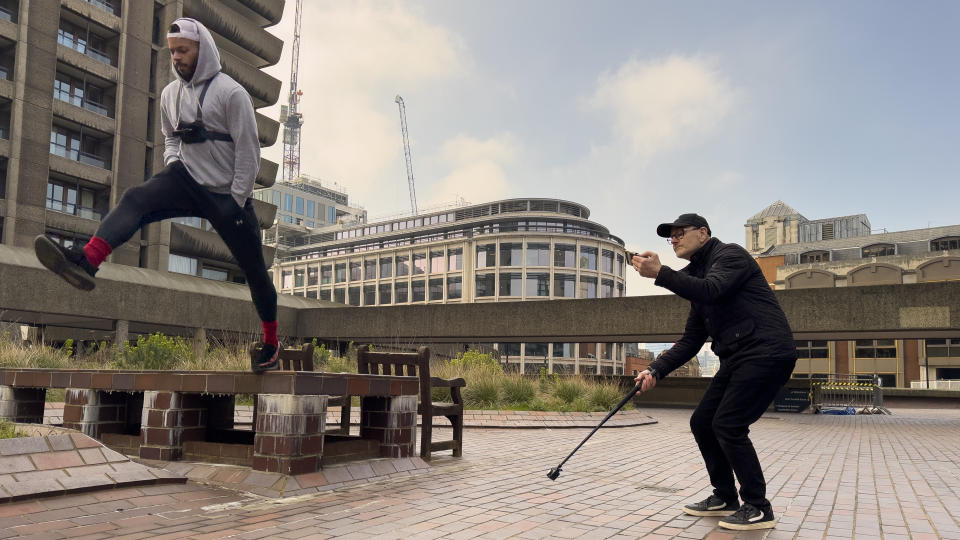Shootout: Can the iPhone 15 Pro Max compete with a dedicated action camera? I recruited a stuntman to find out
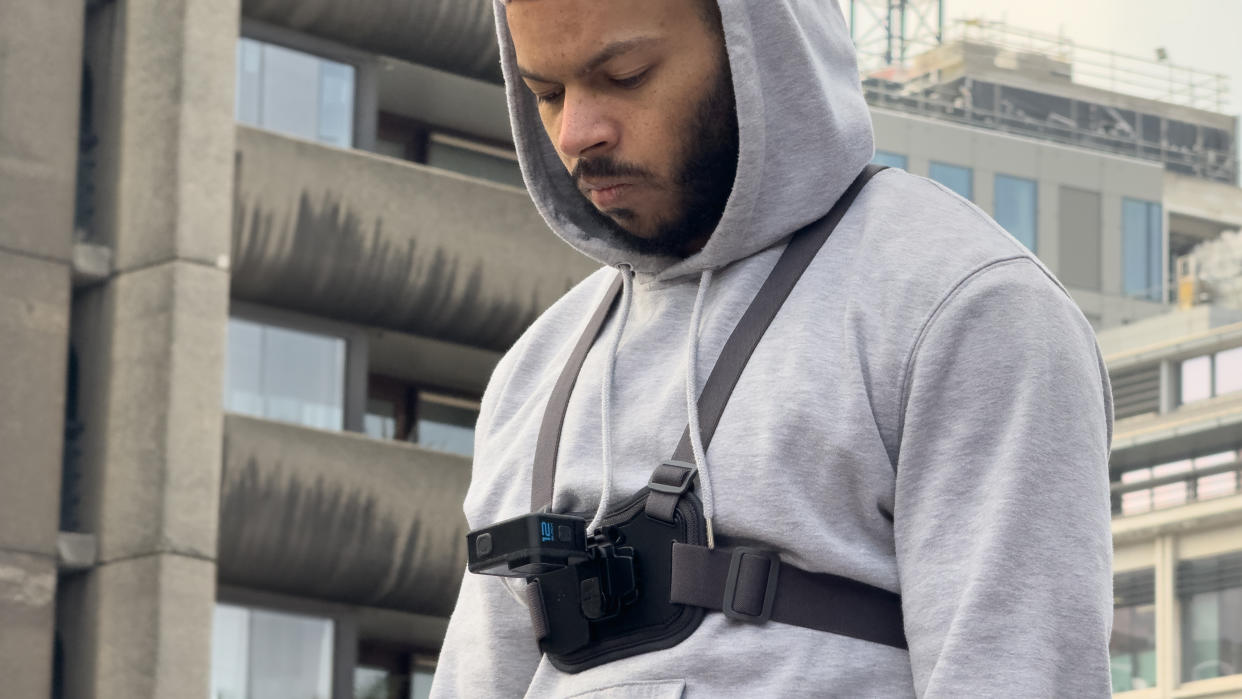
The iPhone 15 Pro Max's Camera app has an Action mode that stabilizes the shakiest camera moves. Plus the iPhone’s optical image stabilization hardware irons out the wobbles by physically vibrating the sensor in the X, Y, and Z axes. I was therefore keen to see how Apple’s top-of-the-range iPhone performed in comparison to the latest GoPro model, the Hero 12 Black, as the GoPro brand is synonymous with action cameras.
To test the two devices I met up with stuntman Matt Igwe to film him performing parkour moves such as running, jumping, and flipping through 360º in an urban environment. I chose a stuntman to film as he’d know his limits and not risk being injured on the shoot. Check out the video below:
I chose not to use gimbals with the GoPro and iPhone as I wanted to see how both devices’ built-in stabilization software (and hardware) performed as I filmed the action handheld.
To make the iPhone safer to handle (I’d previously managed to crack the screen on my iPhone 14 Pro Max) and easier to maneuver I placed it in a Neewer cage. I mounted the GoPro on a Volta, which made it easier to hold while following the action – plus the Volta’s Bluetooth connectivity enabled me to start and stop recording via a handy physical button on the handle.

After Matt had warmed up we started with a simple parkour routine where he ran, jumped onto a concrete bench, and then jumped through the air onto another bench. As I ran to follow Matt I gripped the handle of the iPhone’s Neewer cage in one hand while simultaneously holding the Volta-mounted GoPro in the other. The GoPro was set to shoot in 4K at 30fps. Because I chose Action mode for the iPhone I was limited to capturing a smaller resolution of 2K at 30fps.
Both the handheld iPhone and the GoPro produced gimbal smooth footage, thanks to their software stabilization, though the GoPro had the edge in relation to its 4K resolution.
When you view the live feed of the action through the iPhone Camera app’s display during a take, the footage shakes wildly. However, this extreme shake is immediately ironed out when you view the recorded clip in the Photos app.
Without a gimbal, you run the risk of tilting the camera and capturing a wonky horizon. The GoPro has a very useful Horizon Leveling menu option that keeps everything straight when shooting handheld, and the iPhone also produces a level horizon when shooting in Action mode.
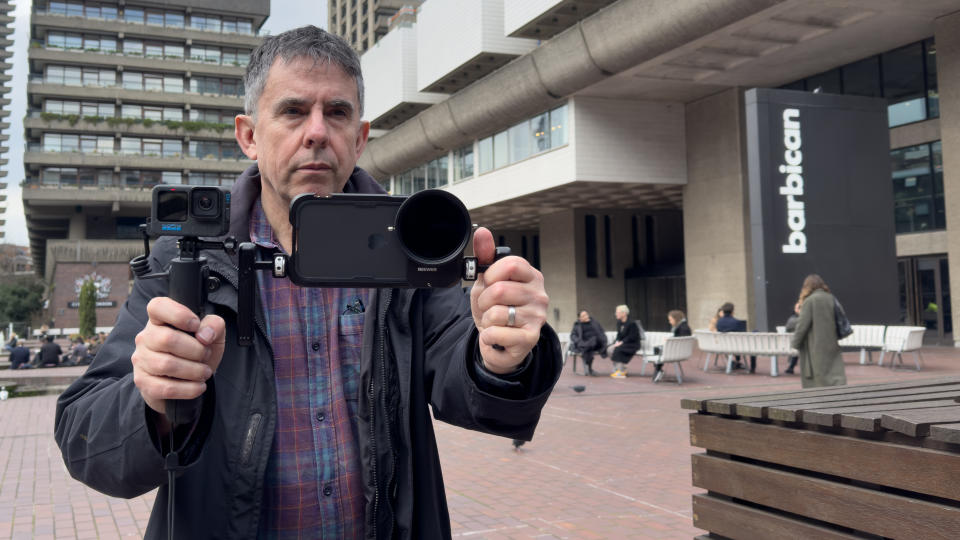
Our next parkour sequence involved filming Matt do a 360º flip from the concrete bench onto the ground. I wanted to rotate the camera as he somersaulted to add a dynamic camera move to the sequence. As the iPhone was mounted in the Neewer cage I was able to use its handles to make the iPhone rotate 180º as Matt flipped through the air.
This would’ve been a tricky camera move to perform with the GoPro using its stick-like Volta handle. Some gimbals have an Inception mode that causes them to rotate through 360º, but it would be a challenge to make them rotate at the same speed as our stuntman. By rotating the cage-mounted iPhone manually I was able to match the timing and speed of Matt’s jump perfectly.

The GoPro, however, did have the advantage as a wearable action camera. I purchased a harness and got Matt to wear it with the Hero 12 attached to his chest. The GoPro comes with handy presets including one called ‘Chesty’. This sets the camera to shoot a wide-angle clip with maximum stabilization – the perfect setting for capturing kinetic sequences when mounted on a chest harness. I was then able to capture striking POV shots as Matt flew through the air.
I wouldn’t have wanted to risk strapping my iPhone to a stuntman’s chest harness in case it got damaged, plus the lighter and smaller GoPro would be more comfortable for Matt to wear as he performed parkour.
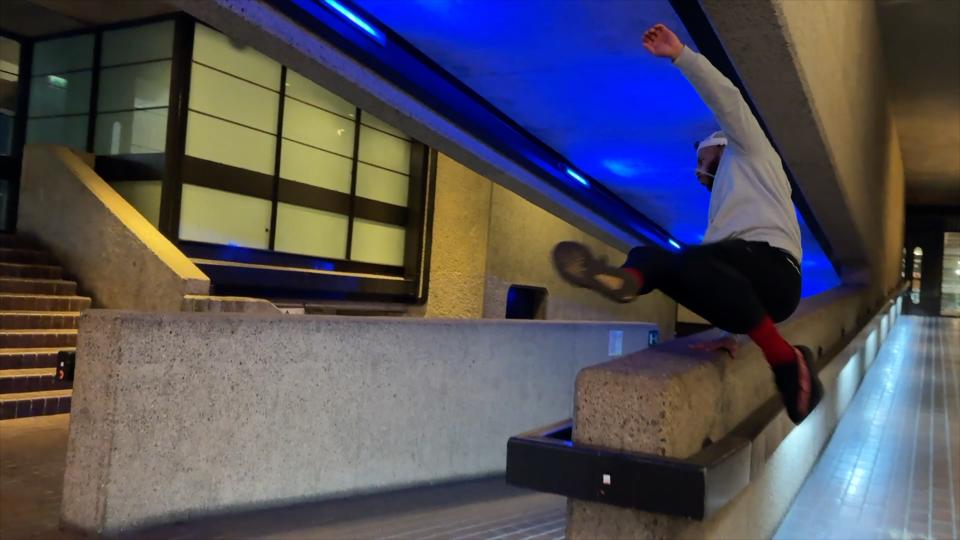
Some parkour moves are over in seconds, so I set both the iPhone and the GoPro to shoot in their slow-motion modes. Both devices used a high frame rate of 120fps so I could slow them down in the edit while preserving a smooth motion.
Here the GoPro had the edge by being able to shoot at a higher resolution of 4K (3840 x 2160) whereas the iPhone’s SloMo mode could only manage a smaller HD resolution (1080 x 1930). This means that the iPhone slow-motion sequence looked a little fuzzy in the 4K project’s timeline compared to the GoPro’s footage.
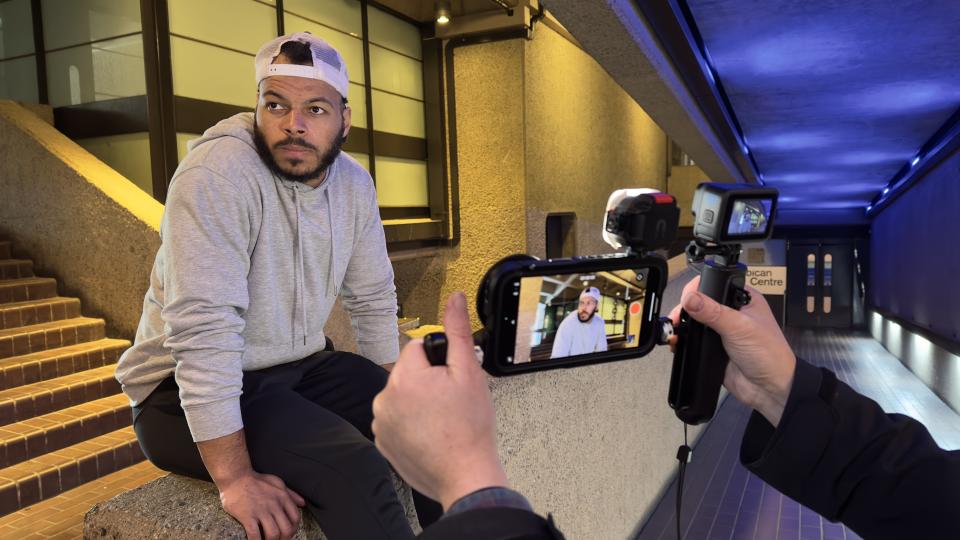
Testing both cameras in low light, the iPhone footage was bright and vibrant while the GoPro slow-motion clip was very dark. This could be because I’d limited the GoPro to a maximum ISO of 1600 while the iPhone sets ISO (sensitivity to light) automatically.
Shooting with the GoPro at a normal frame rate led to better exposure in low light but, despite having Auto Boost stabilization turned, the handheld GoPro footage was less stable than that captured by the iPhone filming in Action mode (even though the iPhone complained about there not being enough light in our location).
Verdict
And the winner is… both and neither! Each camera has its own strengths and weaknesses. I thoroughly enjoyed using the iPhone 15 Pro Max and the GoPro Hero Black 12 to film our parkour sequences, and both devices performed well in bright light when it came to producing gimbal-smooth camera moves using in-camera stabilization. The two handles on the cage-mounted iPhone enabled me to shoot complex moves such as a 180º roll with precision, but the GoPro was more effective as a harness wearable action camera.
Both could keep the horizon level and the action was gimbal-smooth, but the GoPro has the edge when shooting slow-motion thanks to its greater resolution. The iPhone appeared to have the edge in low light. So on future action shoots, I’ll take both cameras in my kit bag because they both have their own strengths to employ in different shooting scenarios.
